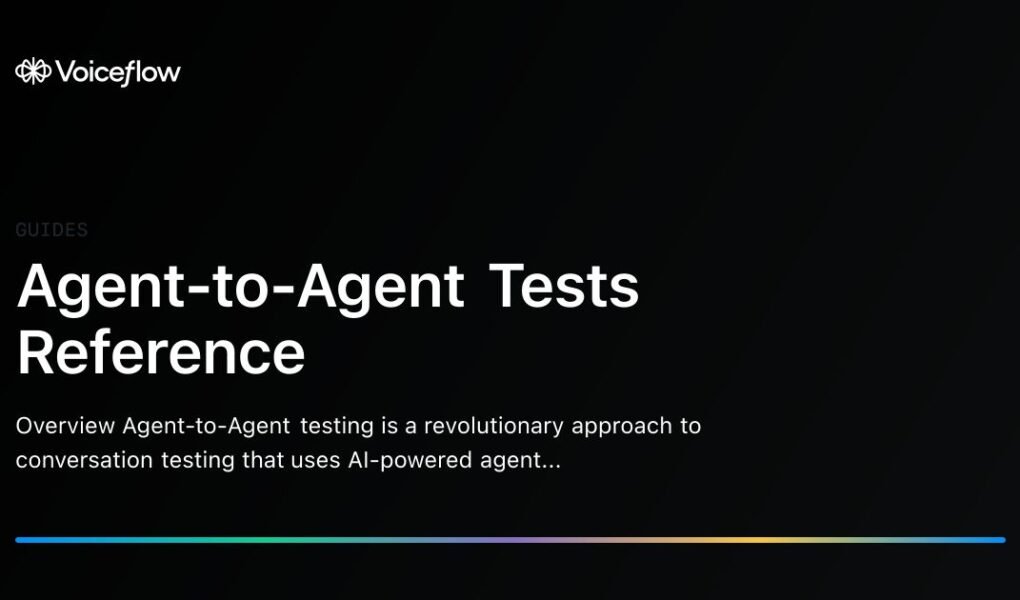AI agents now populate digital infrastructure, from customer service chatbots routing queries, to recommendation engines coordinating inventory, workflow automation bots orchestrating processes, and DevOps pipelines managing deployments autonomously. These systems don’t simply execute scripts; they engage in the “conversation of code,” dynamically communicating, making decisions, and influencing each other in real time.
Testing these agent-to-agent interactions through effective agent-to-agent testing presents challenges far beyond traditional software validation, requiring innovative strategies to ensure reliability, safety, and predictability. Miscommunications can cascade into system failures, create resource-draining loops, or amplify biased outcomes.
Unlike deterministic software, agent conversations involve reasoning, context interpretation, and adaptive decision-making, producing varying results even with identical inputs.
The Rise of Conversational Systems
Autonomous agents now span enterprise and consumer applications:
- Chatbots handling complex customer interactions
- Recommendation engines coordinating logistics and inventory
- Workflow automation bots orchestrating multi-department processes.
- DevOps agents managing deployments and incidents
- Financial and healthcare systems are making routing decisions autonomously
Why Agent-to-Agent Testing Is Different?
Traditional testing assumes predictable execution paths, but agents make contextual decisions based on real-time inputs. Emergent behaviors arise from interactions that cannot be predicted from individual agents alone. Agent-to-agent testing validates not only what agents do, but why, accounting for non-deterministic, context-dependent outcomes.
Key Layers of Testing
- Communication Layer: Validate APIs, protocols, event handling, message queues, serialization, authentication, and retries.
- Decision Layer: Confirm logic, decision-tree traversal, consistency, business rule compliance, constraints, priority handling, and reasoning transparency.
- Context Awareness: Test situational adaptation, historical context, user/environmental signals, language/locale, temporal awareness, state management, and context handoff.
- Conflict Resolution: Assess disagreement handling, fallbacks, compromise logic, deadlock prevention, graceful degradation, human overrides, and audit trails.
- End-to-End Flow: Ensure user journey completion, cross-agent consistency, performance, transaction integrity, error propagation, recovery, and business outcome validation.
Challenges in Multi-Agent Testing
- Unpredictability & Non-Determinism: Probabilistic decisions, emergent behaviors, and flakiness.
- Exponential Scaling: Interaction scenarios grow rapidly with additional agents.
- Context Dependency: Real-time data, user preferences, and environment affect decisions.
- Debugging Difficulty: Distributed reasoning complicates root-cause analysis.
- Ethical Concerns: Bias, fairness, privacy, and accountability require attention.
Where Intelligent Platforms Add Value?
Manual testing cannot scale to thousands of agent interactions. Automation AI tools, like LambdaTest KaneAI, empower QA teams to:
- Generate intelligent test scenarios from natural language
- Analyze agent-to-agent conversation logs
- Optimize coverage across exponentially growing interaction spaces
- Provide predictive risk assessments and automated debugging insights
The future of agent-to-agent testing lies in autonomous QA agents, explainable AI for conversational reasoning, and continuous, intelligent validation in production environments. IoT networks, smart cities, robotic systems, and multi-agent SaaS applications will rely on AI-powered testing assistants to ensure reliability, transparency, and alignment with business objectives.
Conclusion
Software testing has evolved into orchestrating quality across conversational agent ecosystems. Agent-to-agent testing ensures autonomous systems interact reliably, ethically, and predictably. With advanced automation AI tools like KaneAI, QA teams can navigate the complexities of multi-agent systems, optimize test coverage, and future-proof software delivery in an era dominated by intelligent, self-directed agents.



